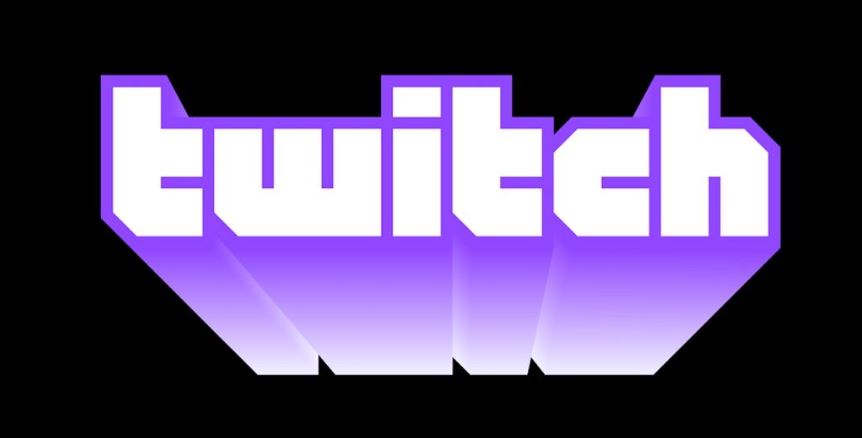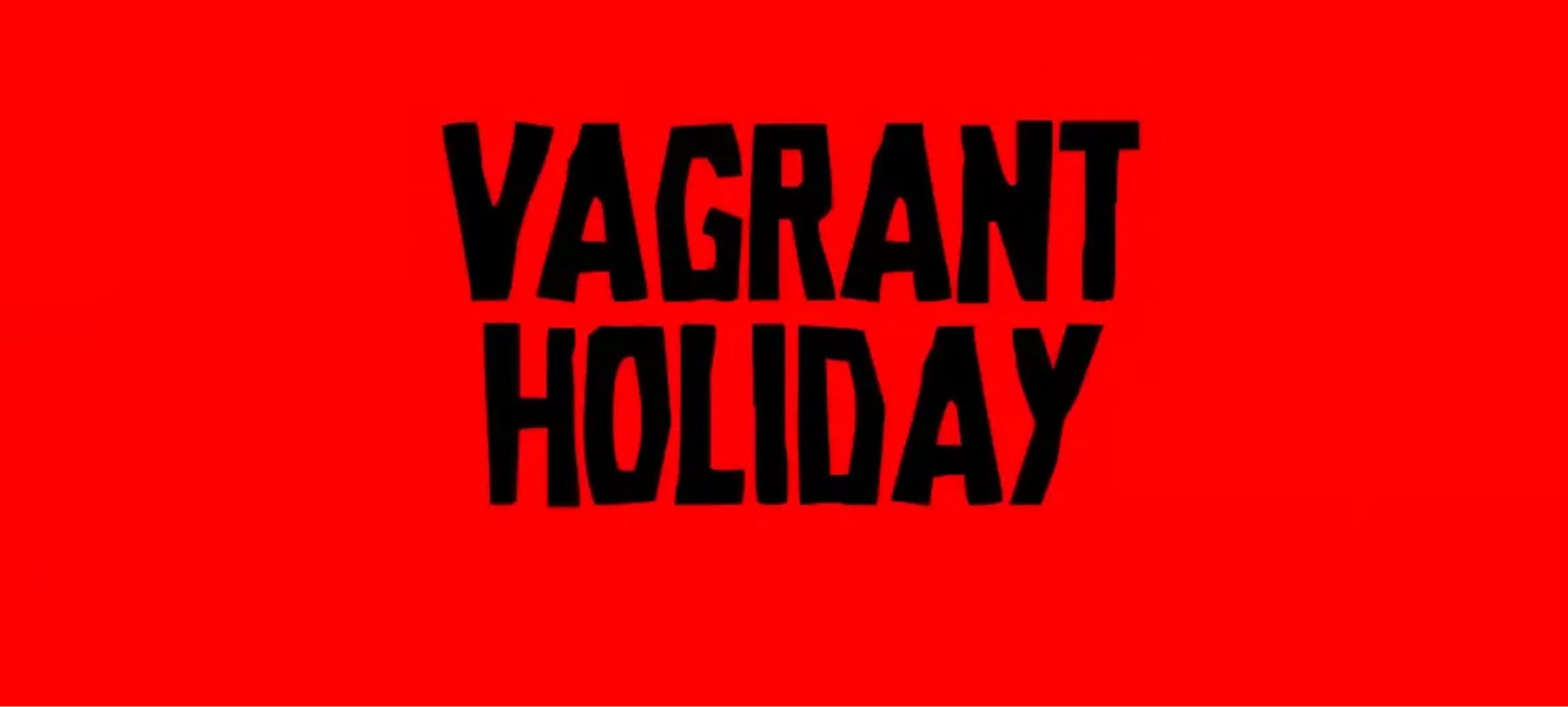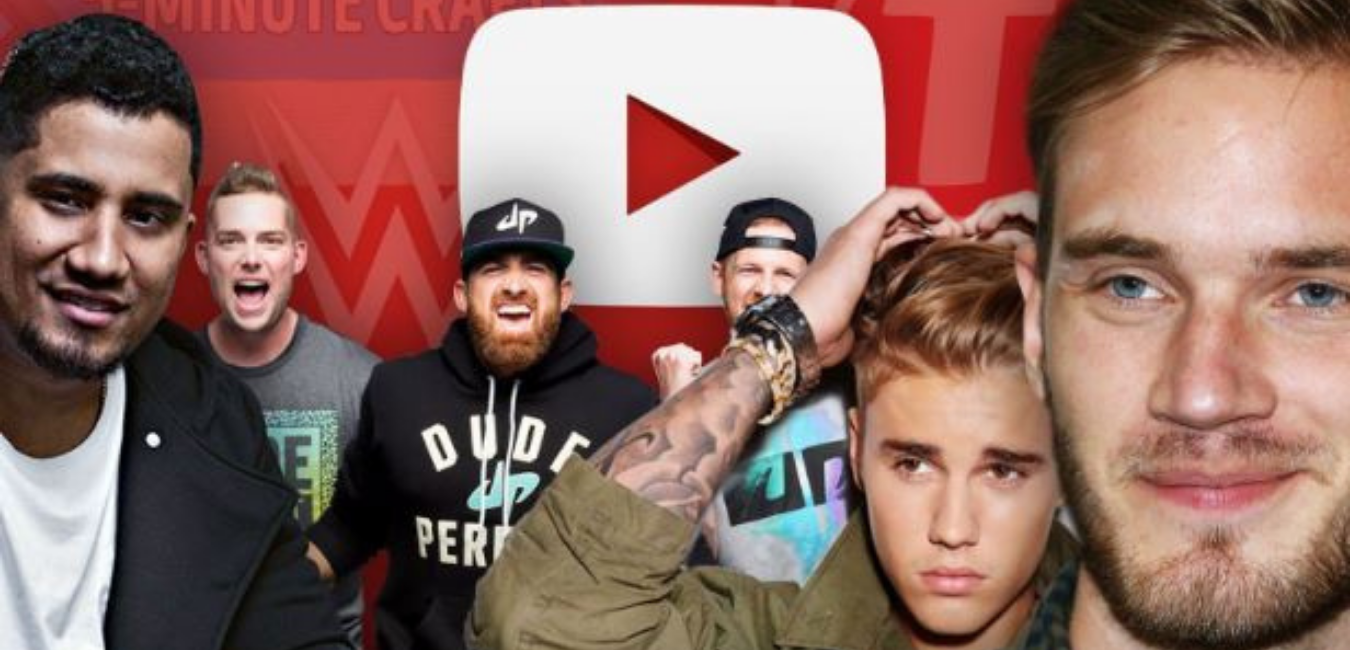Twitch pioneered the idea that average gamers can become celebrities from the comfort of their homes, but a look at the platform’s longtime stats shows it might be stagnating – and that alternative streaming sites may look more enticing.
In 2007, when 24-year-old Justin Khan launched his very own live streaming platform, Justin.tv, he couldn’t possibly have known it would become the content machine it is today. Khan’s novel 24/7 live streaming project would evolve over time, splitting to create the spin-off site, Twitch, in 2011.
From 2016 to the start of 2020, anywhere from 20,000 to 50,000 thousand channels could be found streaming on the platform. The site gradually grew over the years, adding a few thousand channels a month, although you could never define its growth as a spike.
Not until part of the way through 2020, when the world was ravaged by a health crisis, forcing people to stay shut inside their homes for weeks – and months – at a time. In April, a month after the crisis reached the US, Twitch experienced immense growth spawning a wave of streamers and viewership the platform would maintain for nearly two years.
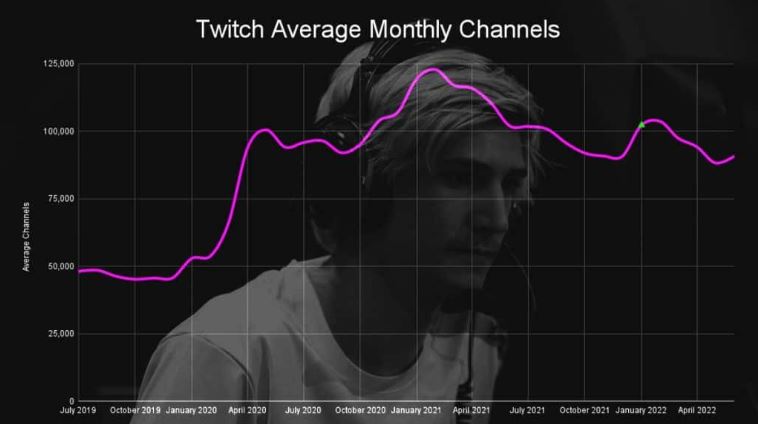
Twitch burns bright and fast
From March/April 2020 until January 2022, Twitch was taking off to new heights launching streamers into internet stardom. It was the start of an age where Travis Scott was recognized as a video game character first over his impressive music career, and xQc was synonymous Tom Holland.
Twitch had an effect on the world during this 21-month period. Twitch went from a monthly average of 50K active channels to 90-100K+. This average would grow over the next two years and the influx of streamers would impact the development of internet culture.
Gamers didn’t want to be PewDiePie or Markiplier anymore. They wanted to be Ludwig, Pokimane, and Valkyrae. And in a time when people around the world couldn’t leave their homes, several streaming careers blossomed creating celebrities that otherwise wouldn’t have been.
We also saw other massive platforms launch their own attempts to emulate Twitch’s success. YouTube Gaming and Facebook Gaming began vying for the platform’s biggest streamers competing to be the top live streaming platform.
While Twitch has remained king, it hasn’t shown growth in several months. A state of stagnation that could be alarming for Twitch streamers, and promising for other platforms.
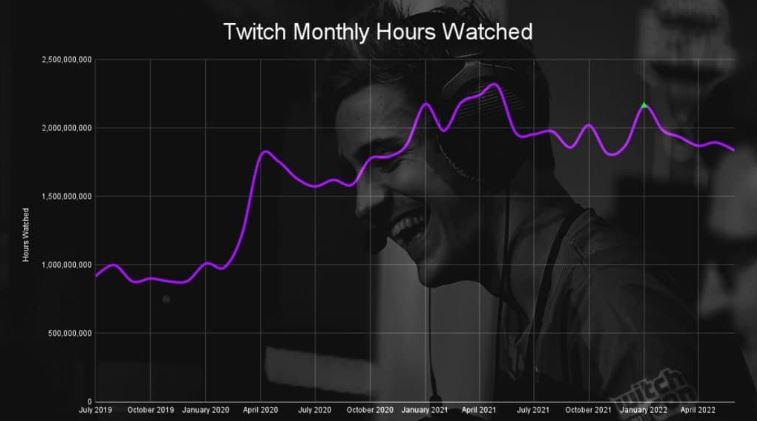
The end of an era
In April/May of 2021, Twitch would peak having the highest monthly average viewers in April (3.11 million) and the most hours watched in May (2.3 million). But from here, the platform would see a slow but steady decline in stats across the board.
That was until January 2022. Twitch saw a small and short-lived spike in active channels, viewers, and hours watched. And for the next six months, the same stats would stagnate, never fluctuating more than a few hundred thousand points at a time.
It seems as if Twitch’s growth has been halted. The platform’s monthly average viewership has hovered around 2.5 million users since July 2021. The average number of live channels has been less than 100K – rarely dipping below 90K – for eight of the last twelve months. And hours watched on the platform have struggled to pass 2 billion since the start of 2022.
None of this is to say the platform is dying, but it hasn’t grown much – if at all – in the last six months. In fact, the numbers reflect Twitch has seen an overall decline in every stat category since June of 2021.
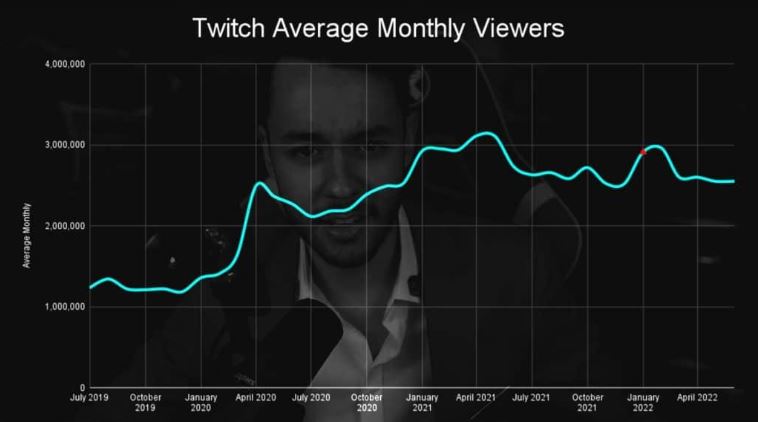
Why is Twitch stagnant?
So, what do all of these numbers mean? At least for the past six months, it seems as if Twitch has stagnated. No growth can be seen for the platform, but there hasn’t been a mass exodus of users either.
Without seeing user data, it can only be assumed that either Twitch isn’t drawing in any new users, or old users are leaving the platform just as fast as new ones are coming in. Either way, the lack of growth could make moving to another domain look more appealing.
As mentioned earlier, the world health crisis of 2020 exposed Twitch to a much wider audience. However, with the world opening its doors, vaccines being produced, and people returning to work; it’s possible the stagnation is a result of viewers having less time on their hands.
That being said, while Twitch isn’t showing growth, the number of streamers looking to make it online is surely growing. But is Twitch the best place for them to start, or do other platforms offer a better chance to grow their audiences?
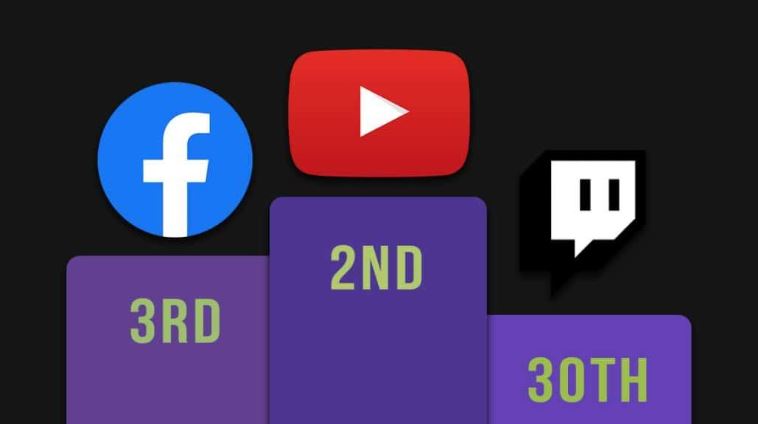
As analyzed in our deep dive of streamers recruited by YouTube, the Google-owned site isn’t snatching up Twitch’s largest partners. Instead, it seems to be padding out its roster with former streaming A-listers. And if YouTube Gaming starts to show immense growth, its platform could look more enticing than one that has remained stagnant for several months.
This feeling is amplified when looking at how Twitch ranks against compared to competitors. Twitch is the 30th most visited website globally, while YouTube and Facebook are 2nd and 3rd respectively. And with constant complaints from users regarding Twitch’s lack of discoverability, it could seem riskier to invest time on Amazon’s platform.
However, YouTube Gaming and Facebook Gaming have their own hurdles when it comes to live streaming. YouTube in particular – while the largest video hosting site – hasn’t quite nailed its presentation of live content. But it is showing that it’s actively working with streamers to improve its live platform which is more than can be said for Twitch.
It’s now 2022. The streaming landscape has changed quite a bit and aspiring content creators need to pick platforms that offer the best chance of being discovered. Will they choose a saturated and stagnant live streaming platform, or will another service offer an opportunity they can’t refuse?
(Via)

